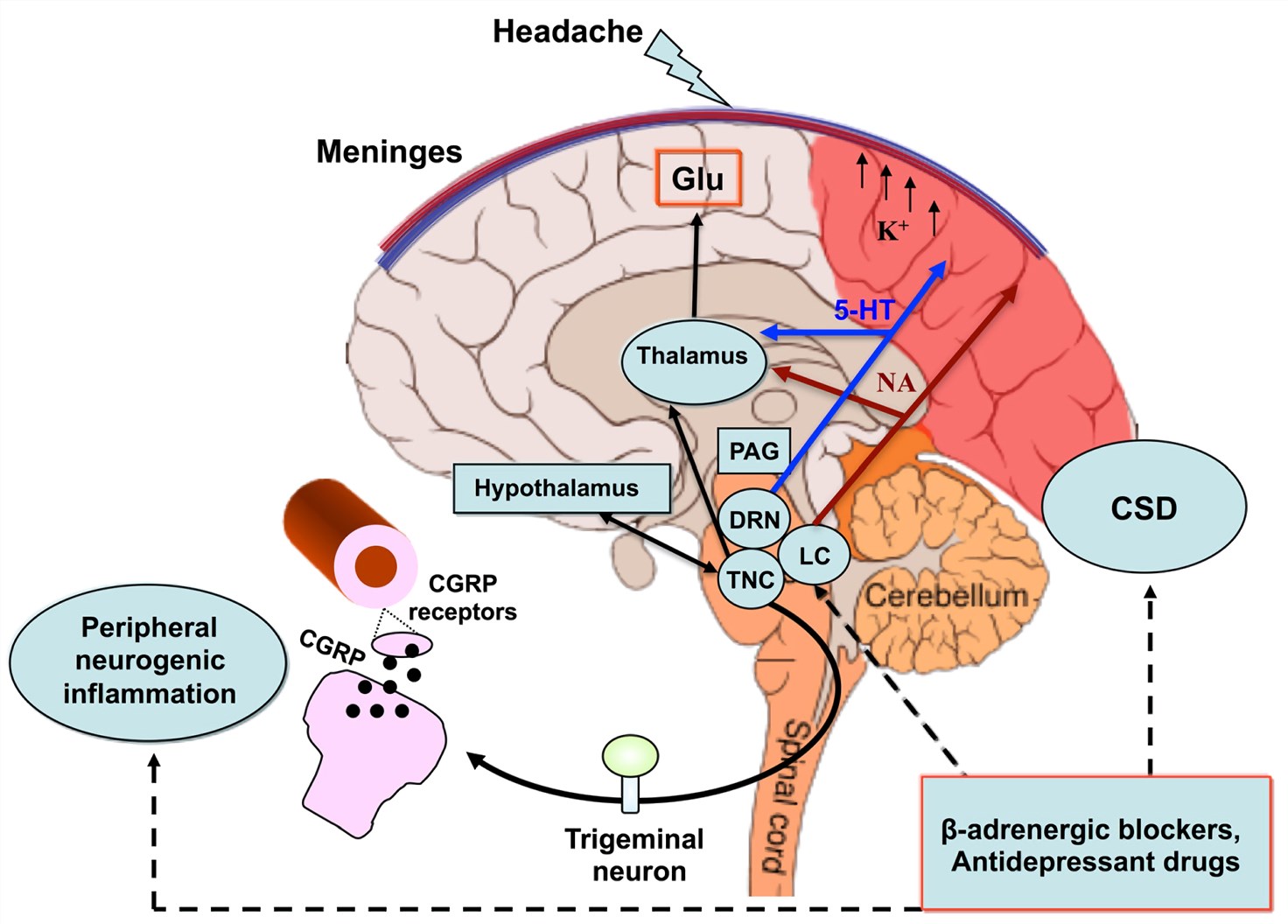Cortical Spreading Depression (CSD) Rodent Model of Migraine Aura
Cortical spreading depression (CSD) is an intense depolarization of neuronal and glial membranes accompanied by a massive disruption of ionic gradients and loss of membrane resistance. It has been shown to be a common therapeutic target for currently prescribed migraine prophylactic drugs and thus is proposed as a useful model for testing novel prophylactic drugs. Creative Biolabs conducts contract studies in the CSD models (KCl-induced & electrical stimulation-induced) for efficacy assessment of new antimigraine drugs.
Introduction of CSD Model of Migraine Aura
Cortical spreading depression (CSD), which is known as a shift in cortical steady potential, results in an increase in the extracellular ions (K+), intracellular ions (Na+ and Ca2+), and neurotransmitter (glutamate). These ionic shifts produce slow direct current (DC) potential shifts that can be recorded extracellularly. Moreover, CSD is associated with changes in cortical parenchymal blood flow. Studies have reported that CSD models are useful tools for testing current and novel prophylactic drugs, providing knowledge on mechanisms of action relevant for migraine. Experimental findings to date suggest that chronic daily administration of certain migraine prophylactic drugs (topiramate, valproate, propranolol, amitriptyline, and methysergide) dose-dependently suppress CSD.
For model induction, animals are anesthetized and placed on a stereotaxic frame. The dura on the left side is exposed and is kept moist with the help of modified synthetic interstitial fluid. Single waves of CSD can be induced using mechanical, electrical, or chemical stimulation of the visual cortex. Chemical stimulation is achieved by the application of high concentration of KCl solution. Electrical stimulation (cathodal pulses) is given by using a concentric bipolar electrode. Currently, electrical stimulation and/or brief applications of high K+ are considered to be the most appropriate CSD-inducing stimuli.
 Fig.1 Mechanisms and structures involved in the pathogenesis of migraine with aura. (Costa et al. 2013)1, 2
Fig.1 Mechanisms and structures involved in the pathogenesis of migraine with aura. (Costa et al. 2013)1, 2
Assessments
Creative Biolabs conducts various assessments for efficacy evaluation of novel prophylactic drugs. The extracellular DC potentials caused by ionic shifts and changes in cerebral blood flow (CBF) occurring during CSD can be recorded. The vascular and parenchymal changes occurring with CSD in anesthetized mice and rats can be examined simultaneously by using optical intrinsic signal (OIS) imaging and electrophysiology. Briefly, the assessments provided by Creative Biolabs include:
- CSD manifestation
- Electrophysiology analysis
- Laser Doppler flowmetry to measure blood flow changes
- Histology/ Immunohistochemistry
- Evoked behavioral testing for allodynia and hyperalgesia measurement
- Spontaneous behavioral testing (e.g., facial grimace, blinking, rearing, gnawing)
- Behavioral tests for motor function and cognition
You may also be interested in:
The neurological platform of Creative Biolabs provides an extensive range of neurological disease models. If you are interested, click the following links for more detailed description of each model:
As a leading CRO research partner for drug development, Creative Biolabs is committed to providing rapidly scheduled, accurate and cost-effective services to our clients. Moreover, we offer customized solutions by working with our clients to develop study-specific experimental protocols as well as novel models. If you're interested in our services, please contact us to discuss your specific requirements.
References
- Costa, C.; et al. Cortical spreading depression as a target for anti-migraine agents[J]. Journal of Headache & Pain. 2013, 14(1):1-18.
- under Open Access license CC BY 4.0, without modification.
For Research Use Only.
